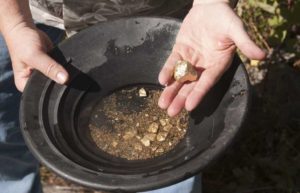
Tons Of Diamonds May Be Beneath You Deep Inside The Earth: Scientists
If scientists are to believed there is a big treasure beneath the Earth’s surface. Yes, according to their findings there could be more than a quadrillion tons of diamond spread beneath the Earth’s surface.

The findings were done by analyzing seismic records which are essentially sound waves passing through the Earth and generated by ground-shaking forces.
According to the explanation provided by a research scientist at MIT, Dr. Ulrich Faul, one of the diamonds many special properties is that the sound waves speed through the material.

“Diamond in many ways is special,” Dr. Faul said. “One of its special properties is that the sound velocity in diamond is more than twice as fast as in the dominant mineral in upper mantle rocks, olivine.”
But the unfortunate side of the story is that the diamond hunters will have to dig a total of 160 km (100 miles) to reach the beneath part of Earth’s surface, much farther than any human drills ever done.
The team working with Dr. Faul found that the speed of sound was a lot faster than it could have been expected within sections of rock called as cratonic roots.
According to the research, Cratons are the most old sections of rock beneath that are usually under the continental tectonic plates, and their roots – they are all shaped like mountains but in an inverted position – go down upto 200 miles beneath the Earth’s surface layer.
So the study gives an idea about how much of these may be composed of diamond, that is 2%. So if maths is done for this percentage the result would suggest that there could be a quadrillion tons of diamond material spread up to 150 miles under the surface.
Thus the depth makes it almost unlikely that we may get those diamonds with present-day technology.
The deepest drill by humans is located in Russia called as Kola Superdeep Borehole. It took a total 20 years to reach such a depth of 12km (7.5 miles) and was abandoned after the collapse of the Soviet Union.
The conclusion reached by the scientists is explained by the research work done by MIT and other universities. The research was published in the journal Geochemistry, Geophysics, Geosystems.
Dr. Faul explained: “[Cratons] are like pieces of wood, floating on water. Cratons are a tiny bit less dense than their surroundings, so they don’t get subducted back into the Earth but stay floating on the surface.”

“This is how they preserve the oldest rocks. So we found that you just need 1% to 2% diamond for cratons to be stable and not sink.”
“It’s circumstantial evidence, but we’ve pieced it all together.”
“We went through all the different possibilities, from every angle, and this is the only one that’s left as a reasonable explanation.”
You May Also Read: NASA Releases New Mosaics Of Titan, Saturn’s Massive Moon Called As ‘Alien Earth’